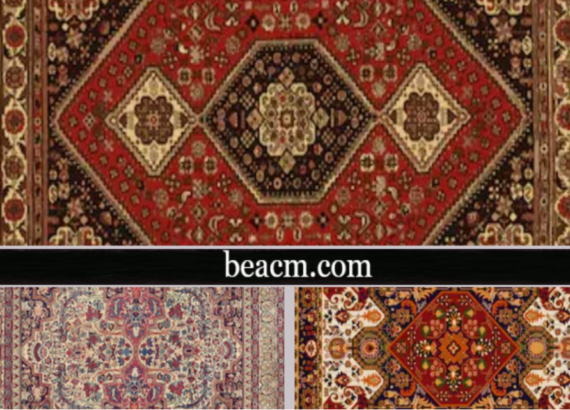Persian Carpet Weaving: types and techniques

Persian Carpet Weaving: Types and Techniques
A long tradition of carpet weaving
If you have ever seen a Persian carpet, you know it is a beautiful work of art. But what makes a Persian rug different? Well, the name Persia refers to a part of the world that includes Iran and Turkey, both once part of the Persian Empire. It is a region known for weaving carpets.
But how is it done? Weaving creates a textile by interweaving threads. Weaving is done on a loom, a frame-like device that contains two basic types of threads.
Warp threads run vertically, are attached to the loom frame and kept under tension.
Weft threads run horizontally and are interlaced with warp threads.
Most Persian carpets are made by hand and their width is determined by the width of the loom on which they are made. Persian carpets can be made of natural fibres such as cotton, silk or wool.
Let us now examine some types of carpets and techniques used to make them.
Knotting techniques
Persian carpets are famous for a luxuriously thick pile or carpet surface (the stuff through which your fingers and toes pass), which is made by weaving with an important additional step. During the weaving process, many hand-tied knots are added in rows to the warp threads. Weft threads are then interlaced over them and packed together with a comb to keep the knots in place.
A carpet weaver at work. The high vertical strings are the warp threads. Note how his weaving creates a thick pile.
weave
The nodes form the surface texture and the image. The density of nodes, or the number of nodes used within a square inch area, varies by region and carpet type. It can sometimes signal a very high quality carpet.
Another factor that affects knots is the knot type or how the knot is tied to warp threads. It also tends to vary depending on the geographical area where the rug is made.
Knot types
One of the node types is the Persian or Senneh node, which is also called an “asymmetrical” node. In this knot, yarn wraps around a warp thread, runs under an adjacent warp and then goes to the surface.
A Persian carpet with an intricate design
Persian carpet
Many Persian knots fit into a small area and are often used for detailed designs. The Turkish or Ghiorde knot, also known as a “symmetrical” knot, has yarn wrapped around two warp threads. Each end of the yarn is then wound behind a warp and brought to the surface. This creates a more durable carpet.
And then there is the Jufti knot, which is used in a certain area of Iran, where one yarn is wrapped around four warp threads.
 A carpet weaver at work. The high vertical strings are the warp threads. Note how his weaving creates a thick pile.
A carpet weaver at work. The high vertical strings are the warp threads. Note how his weaving creates a thick pile.
A trained weaver can work quickly, but it is still a time consuming process and it can take up to two years to finish a carpet. When the weaving is complete, the pile surface of the carpet must be carefully shaved to ensure that all yarns are the same height – this way the design is clear and crisp.
 Theree Persian carpet with an intricate design
Theree Persian carpet with an intricate design
Flat woven carpets
Another type of Persian carpet is a flat-woven carpet known as a kilim. These rugs do not have a knotted pile and use many special weaving techniques that skip a certain number of warp or weft threads to create designs.
One of these techniques is known as slit weaving, where gaps remain between the borders in the weft threads of blocks of colour that are woven to form the patterns on the carpet. Another method, called pigeon tail, connects the borders between blocks of colour by interlacing weft threads. This creates blurred edges for the design.





